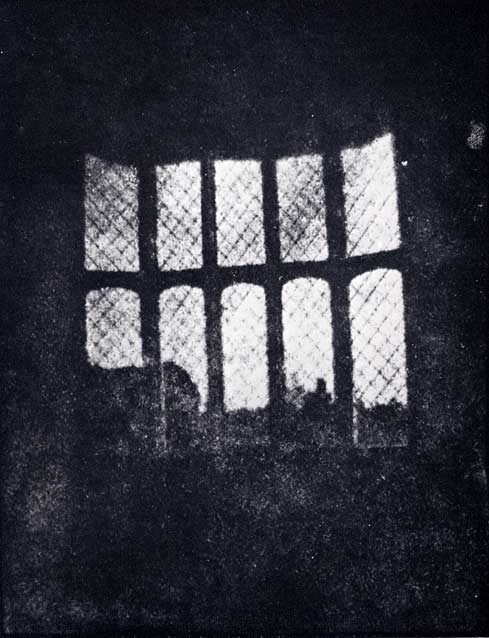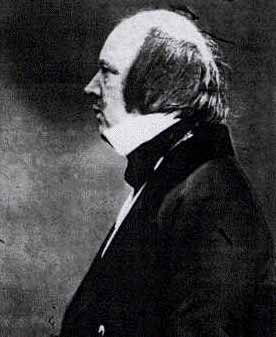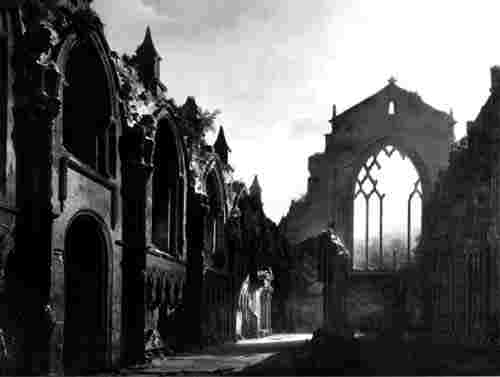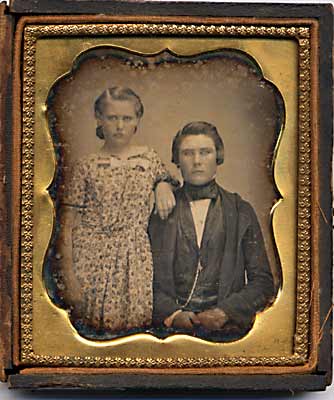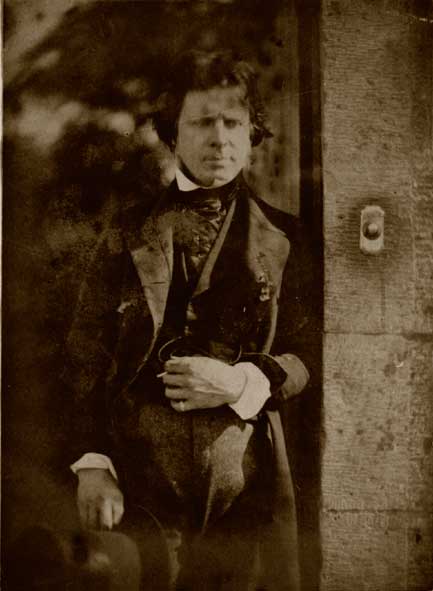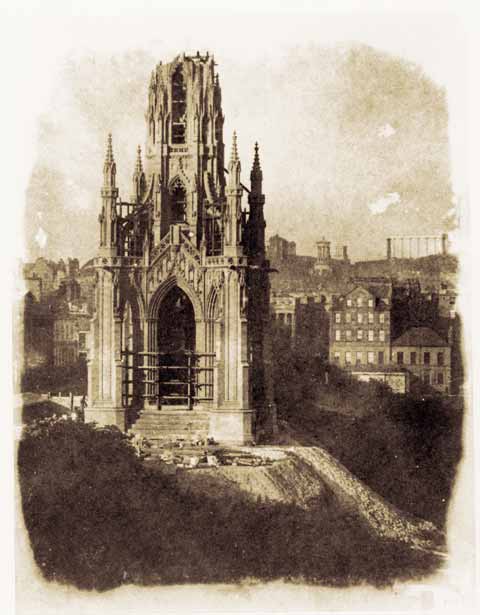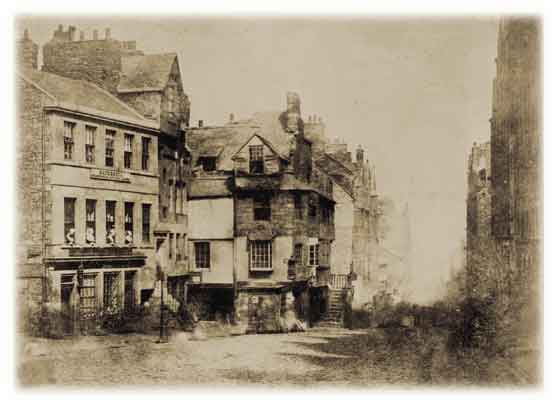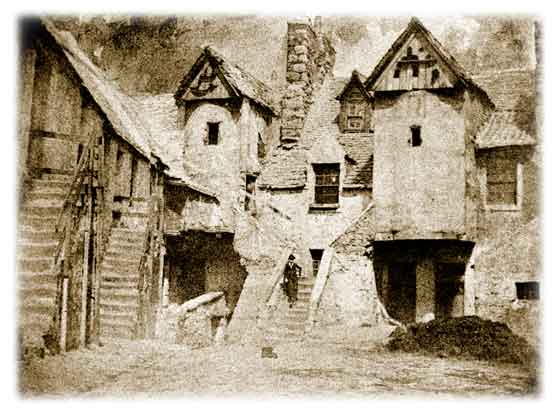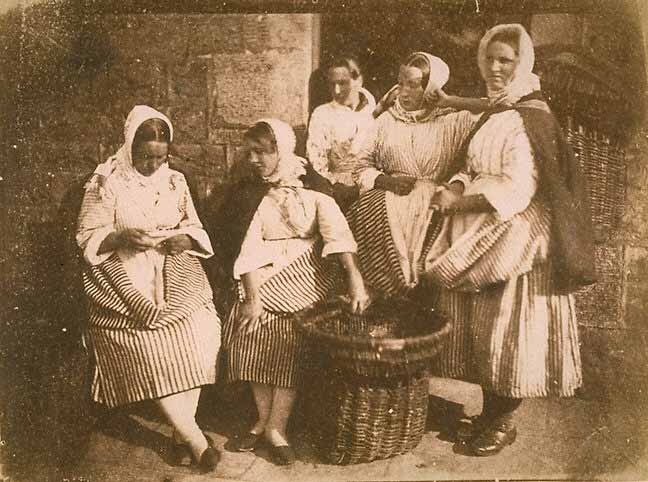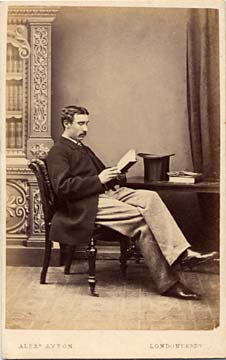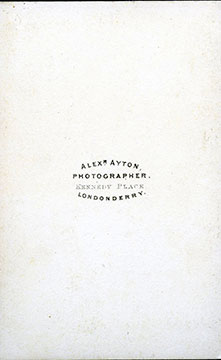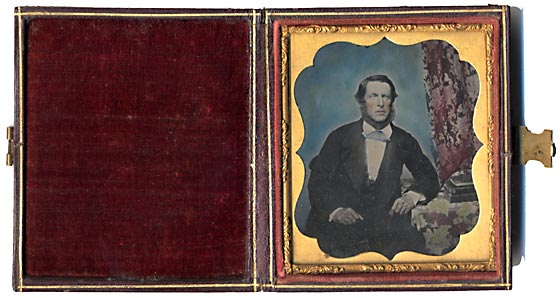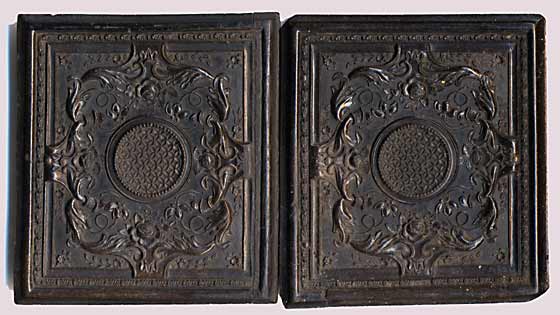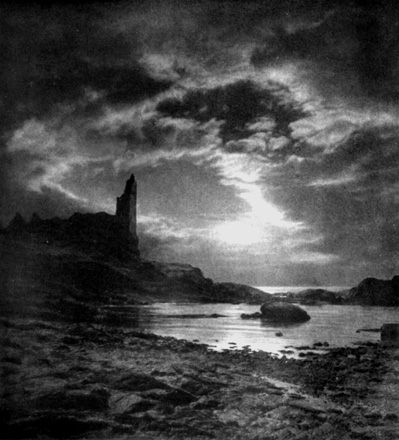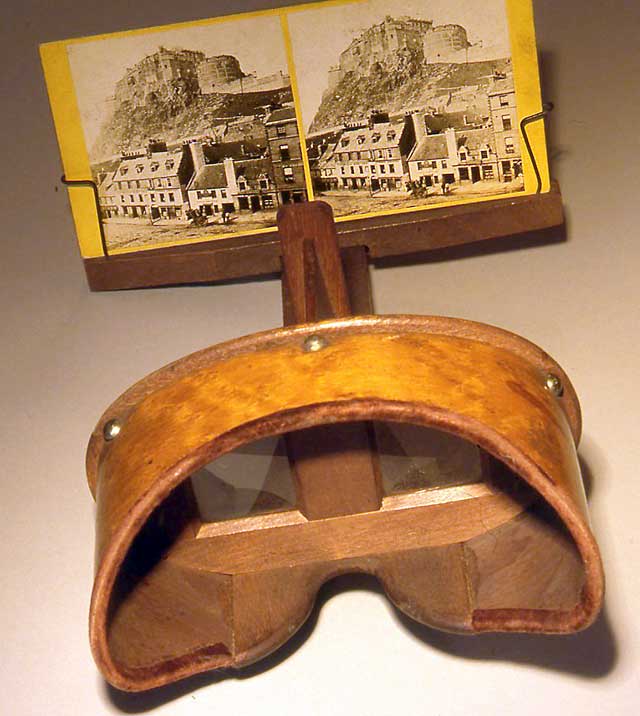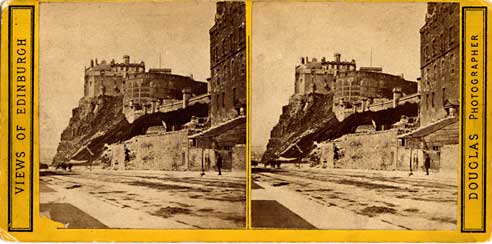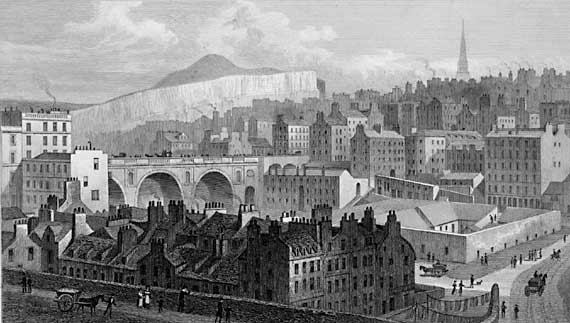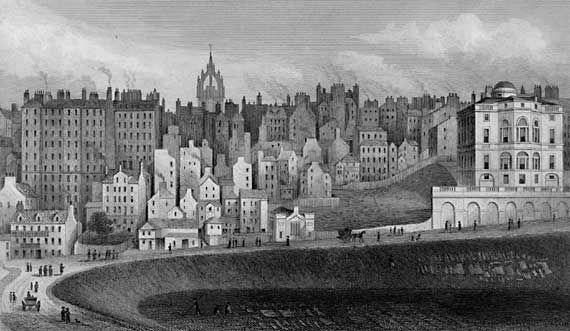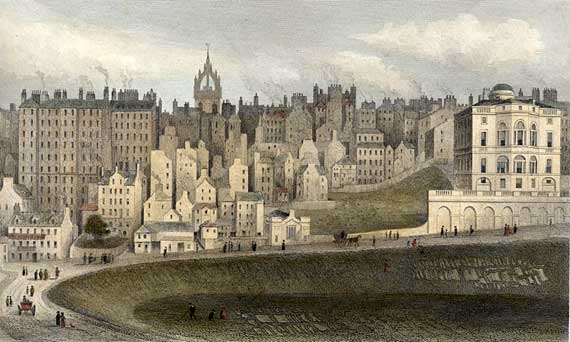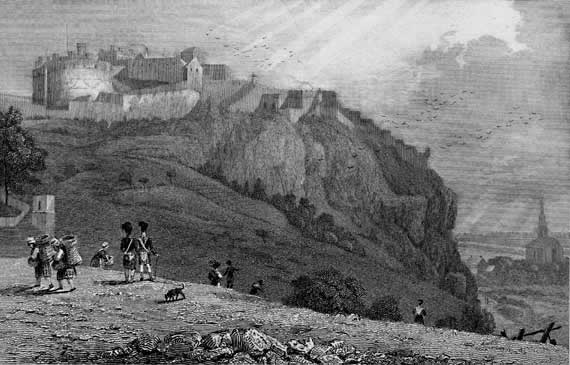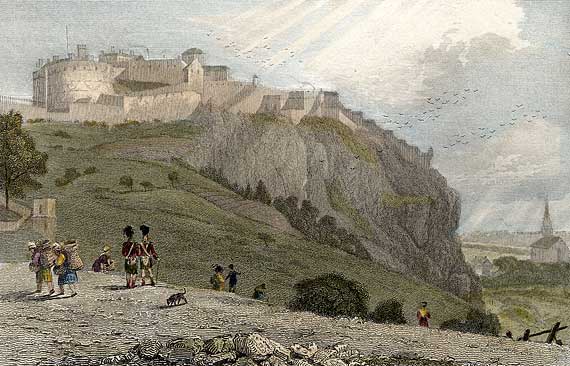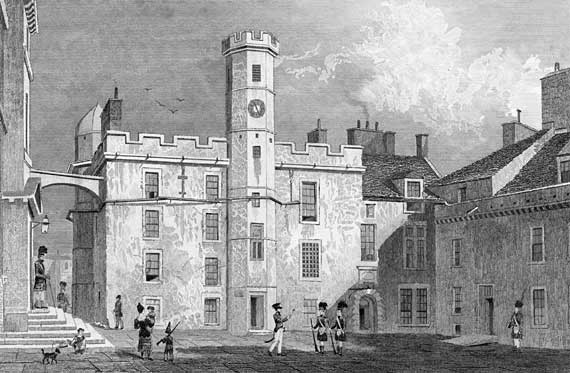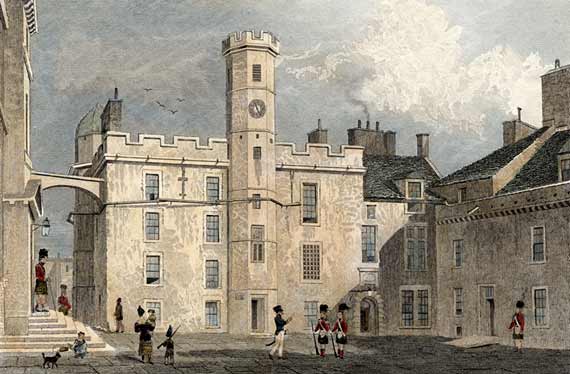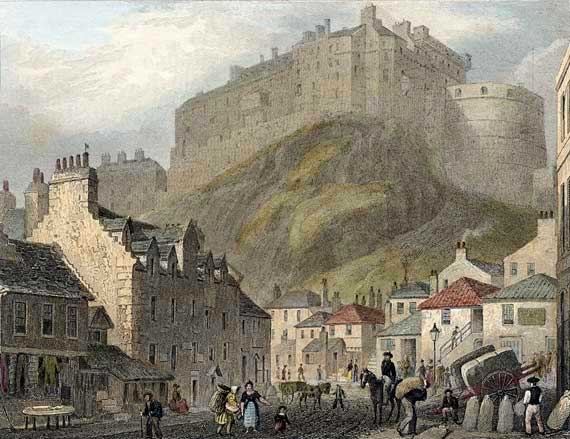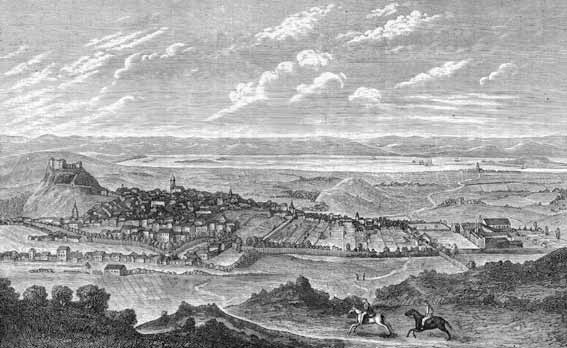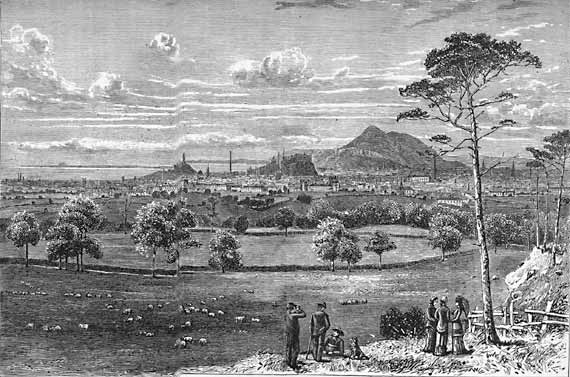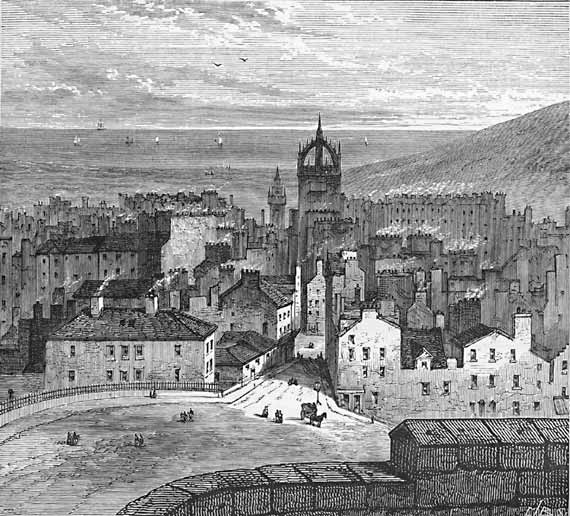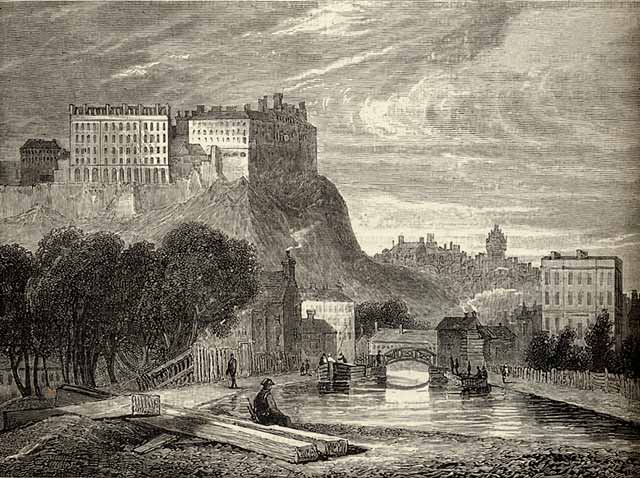Early Photography and Engravings
Please keep scrolling down this page.
|
Museum of Edinburgh Talk PAGE INDEX
The History of Edinburgh Old Town & Royal Mile in Pictures |
||
|
0. |
Lots of photos to see. |
|
|
1. |
Talbot, Daguerre, Hill & Adamson, Engravings. |
|
|
2. |
Edinburgh Calotype Club |
|
|
3. |
Dumbiedykes, |
|
|
4. |
Shops, Shops and Cars, |
|
|
5. |
Festivals and Processions, |
|
|
6. |
Castle to Palace |
|
|
7. |
Royal Mile. |
|
|
Early Photography and Engravings |
|
Talbot - Daguerre - Hill & Adamson - Engravings |
1.
|
Talbot and Daguerre |
|
There were some earlier experiments in photography, but it was not until 1839 that any reliable process was invented - then two came along together - one in England and one in France. ______________________________________________________________ Talbot In England, it was William Henry Fox Talbot, born 1800, Dorset, who announced his Calotype method. It produced a negative image on paper which could then be used to make multiple prints. - Talbot was a member of the Astronomical Society and the Royal Society in London. - He studied Classics and Mathematics at Cambridge. - He was a Biblical scholar and a botanist, and helped to decipher cuneiform script. - He corresponded with Herschel who had knowledge of chemistry and Brewster who had knowledge of optics. - He began to experiment with photography in 1834. The Latticed Window This is a print is from the earliest negative known to have survived, 'The Latticed Window', an early print by Talbot from his home at Lacock Abbey, Wiltshire.
©
Reproduced
from the National Museum of Photography,
Film and
Television collection, The negative and print above are both very small - only about 1 inch square. This is the type of small, simple camera that Talbot was using around 1840. Cameras used by Talbot
©
Reproduced
from the National Museum of Photography,
Film and Television collection,
Portraits Here are two photos of Talbot taken by Ivan Sjabo, one of the prominent photographers in St Andrews. It seems that bot Sjabo and Talbot must have had a sense of humour! Talbot 'Hair down, Collar up' 'Hair up, Collar down' Talbot visited Edinburgh in the early-1840s to take photos for his book, 'Sun Pictures of Scotland'. Here is one of his photos, showing the Scott Monument under construction: Talbot was elected an Honorary Member of Edinburgh Photographic Society in 1862 and in later life lived in Edinburgh at several different addresses. ______________________________________________________________ Daguerre In Paris, it was Louis-Jacques-Mandé Daguerre, born 1787, France, who announced his Daguerreotype process. This process was very different from that discovered by Talbot. Daguerre's process produced a single delicate image on metal. - Daguerre was a painter who designed diorama scenes for the theatre. - He had partnered Nicéphore Niépce for his photographic experiments, until Niépce's death in 1833. Here is an engraving of Daguerre from one of the early photographic journals. © Reproduced by courtesy of Edinburgh Photographic Society Holyrood Abbey, Edinburgh I've not found any evidence that Daguerre ever visited Edinburgh, but he did paint this large picture of Holyrood Abbey,
©
Reproduced by courtesy of
The Board of Trustees of the National Museums & Galleries
Daguerreotype A Daguerreotype has to be turned at the right angle to the light for the image to be seen clearly, as in this example. When viewed from other angles, the image might almost disappear.
|
2.
|
Hill & Adamson |
|
Photography was possible from around 1840, but there were not very many photographers around. Skill was needed and exposures of several seconds were required for both Calotype and Daguerreotype photographs. The Daguerreotype process needed special equipment and was hazardous. One of the steps in the process of producing a Daguerreo-type was to expose the metal plate with the image to vapour from heated mercury! ______________________________________________________________ Hill & Adamson The Hill & Adamson partnership had a studio at their home, 'Rock House', beside the steps leading up from Regent Road to Calton Hill. They produced some remarkable results in 1843-47. The partnership was cut short by the early death of Robert Adamson. © Reproduced by courtesy of Edinburgh City Libraries and Information Services
Here is one of their Calotype photos of The Scott Monument under construction ... © This photograph is included with National Galleries of Scotland permission. See Copyright Conditions ... and here are two of their photos taken in the Old Town: © This photograph is included with National Galleries of Scotland permission. See Copyright Conditions © This photograph is included with National Galleries of Scotland permission. See Copyright Conditions Hill & Adamson also took many documentary photos of the fishwives and fishermen of Newhaven, about 3 miles north of the centre of Edinburgh. © Reproduced by courtesy St Andrews University Library ALB6-92
|
3.
|
Further Progress in Photography |
|
Professional Photographers Several advances were made in photography in the 1850s. The collodion process - producing a negative image on a glass plate which was then used to make an albumen print, took over from both the Calotype and Daguerreotype processes. More photographers set up in business. Edinburgh had less than twenty photographic studios in 1855, but the number increased to around sixty by 1865. Later in the century, competition increased and the prices charged by some of the studios reduced significantly. Amateur Photographers It was not until around 1890 that photography became more widely practiced by amateurs. This was helped by the arrival of dry collodion plates which required shorter exposures, and cameras and film from Kodak who arrived on the scene with their slogan, 'You press the button; we do the rest.' Film and Silver Prints By the early-20th century, many photographers had moved from using glass plates to film, and had begun to produce 'silver prints' rather than albumen. Both film and silver prints continued to be the norm until digital photography took over about a hundred years later. Other Processes and Formats Carte de Visite Victorian photograph albums were usually designed to hold just two sizes of photo, cartes de visit (small) and cabinet prints (larger) between around the 1860s and 1900. Front and Back of a carte de visite Cartes de visite were usually bought by the half-dozen or dozen so that they could be shared with family and friends, so the same image would be likely to be added to several photograph albums. Ambrotype Photographers might also offer Ambrotypes. They were sold as individual images, and mounted behind glass in cases, with folding lids.
© Copyright: For permission to reproduce, please contact peter.stubbs@edinphoto.org.uk
Occasionally two photos, such as husband and wife would be mounted in a single case, one inside the body of the case and the other inside the lid. Bromoil and other processes Several other types of photo had periods of being popular - platinum. palladium, bromoil, all favoured by photographers looking for photos that would not fade with time. DUNURE CASTLE, AYRSHIRE "Ruins - Old In Story" - Bromoil by John M Whitehead © Reproduced with acknowledgement to Ed Romney Stereo Views Stereo photos were popular for about a decade around the 1860s and again for about a decade around the 1890s. Stereo Viewer - and view of Grassmarket and Edinburgh Castle © Copyright: peter.stubbs@edinphoto.org.uk
Edinburgh Castle from Johnson Terrace © Copyright: For permission to reproduce, please contact peter.stubbs@edinphoto.org.uk
Edinburgh Castle from the Castle Esplanade © Copyright: For permission to reproduce, please contact peter.stubbs@edinphoto.org.uk Colour Photography In Victorian times, some of the monochrome photos might be hand tinted, with photographers employing specialist staff to carry out this type of work. Colour photography became possible in the early 20th century but only very limited use was made of it. It was from around the 1960s that many keen amateur photographers started to use colour slide film, often Kodachrome. From around the 1970s onwards colour prints became more affordable, so the photos being brought back for the family album change from being perhaps 2 1/4 ins square black and white prints to perhaps 6ins x 4 ins colour prints. Now, in the 21st century, with digital photography, family photos might be viewed on the camera screen and exchanged by email, with only a very small proportion of them ever being printed for the family album. |
4.
|
Pictures in Books Usually engravings in 19th Century |
|
Photos Despite all the advances in photography between 1840 and 1900, very few photos appeared in books over that period. In the early 1840s, Talbot had produced a couple of books illustrated by his photography, but there was no mechanical method to print these photos onto the page, so he had to print all the photos individually then attach them to the book pages. Engravings Most books continued to be illustrated by engravings, just as they had been before the days of photography. Here are some engravings from a couple of books. The engravings in the books were not coloured, but it has become common practice for dealers to break up the books and arrange for the individual engravings to be hand-coloured, then mounted on card. Below are examples of a few of the engravings, both as published and as subsequently published Modern Athens Published 1829 Old Town and North Bridge - from Princes Street © Copyright: For permission to reproduce, please contact peter.stubbs@edinphoto.org.uk © Reproduced with acknowledgement to Ian Smith Edinburgh Old Town and Bank of Scotland - from Princes Street © Copyright: For permission to reproduce, please contact peter.stubbs@edinphoto.org.uk © Reproduced with acknowledgement to Ian Smith © Copyright: For permission to reproduce, please contact peter.stubbs@edinphoto.org.uk © Reproduced with acknowledgement to Ian Smith © Copyright: For permission to reproduce, please contact peter.stubbs@edinphoto.org.uk © Reproduced with acknowledgement to Ian Smith Edinburgh Castle - from the Vennel © Copyright: For permission to reproduce, please contact peter.stubbs@edinphoto.org.uk © Reproduced with acknowledgement to Ian Smith _____________________________________________________________ Old & New Edinburgh Published c.1890 © For permission to reproduce, please contact peter.stubbs@edinphoto.org.u Edinburgh from Corstorphine Hill © For permission to reproduce, please contact peter.stubbs@edinphoto.org.uk Edinburgh from King's Bastion at Edinburgh Castle - 1825 © For permission to reproduce, please contact peter.stubbs@edinphoto.org.uk Edinburgh from King's Bastion at Edinburgh Castle - 1825 © For permission to reproduce, please contact peter.stubbs@edinphoto.org.uk Edinburgh Castle from Port Hopetoun - 1825 © For permission to reproduce, please contact peter.stubbs@edinphoto.org.uk
|
End of Page 1
|
Museum of Edinburgh Talk PAGE INDEX |
||
|
0. |
Lots of photos to see. |
|
|
1. |
Talbot, Daguerre, Hill & Adamson, Engravings. |
|
|
2. |
Edinburgh Calotype Club |
|
|
3. |
Dumbiedykes, |
|
|
4. |
Shops, Shops and Cars, |
|
|
5. |
Festivals and Processions, |
|
|
6. |
Castle to Palace |
|
|
7. |
Royal Mile. |
|
|
Peter Stubbs, Edinburgh |
||

